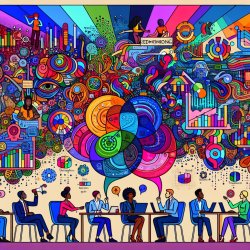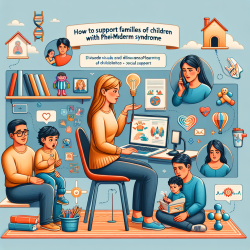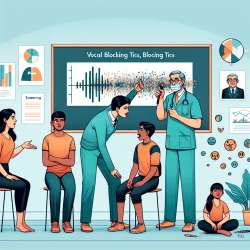Introduction
In today's diverse world, understanding the dynamics of racial interactions is crucial for creating equitable outcomes, especially in fields like speech-language pathology. A recent study titled A mathematical approach to study and forecast racial groups interactions: deterministic modeling and scenario method offers a unique perspective by using mathematical models to analyze these interactions. This blog will explore how practitioners can leverage these findings to enhance their skills and encourage further research.
Key Findings from the Research
The research employs a deterministic model of the Lotka-Volterra (LV) type to study multi-group interactions, focusing on Asians, Blacks, Natives, and Whites in the U.S. between 2002 and 2013. By introducing an index of socioeconomic status (SES) that includes income, employment, life expectancy, and group size, the study highlights how these factors influence racial dynamics.
Key findings include:
- The LV model accurately describes and forecasts group interactions when SES indices are rewritten as a logit model.
- Interactions among racial groups are dynamic and influenced by macroeconomic factors, such as the 2008 financial crisis.
- Drastic interventions are needed to prevent the decline of SES shares for certain groups, like Whites, or to elevate others, like Blacks, to the level of Asians.
Implications for Practitioners
For speech-language pathologists and other practitioners working with diverse populations, these findings can inform data-driven decision-making and intervention strategies. Here are some practical applications:
- Data-Informed Interventions: Use SES indices to tailor interventions that address specific socioeconomic challenges faced by different racial groups.
- Scenario Planning: Apply scenario methods to anticipate and plan for potential changes in racial dynamics, ensuring interventions remain relevant and effective.
- Collaborative Approaches: Encourage mutualistic interactions by fostering environments where diverse groups can support each other's growth, leveraging their unique strengths.
Encouraging Further Research
This study provides a foundation for further research into racial dynamics and SES interactions. Practitioners are encouraged to explore additional variables that may influence these dynamics, such as education and wealth, and to apply these models in different contexts or with additional racial/ethnic groups.
Conclusion
Understanding and forecasting racial interactions through data-driven models can significantly enhance the effectiveness of interventions in speech-language pathology and beyond. By embracing these insights, practitioners can contribute to more equitable and supportive environments for all racial groups.
To read the original research paper, please follow this link: A mathematical approach to study and forecast racial groups interactions: deterministic modeling and scenario method.










